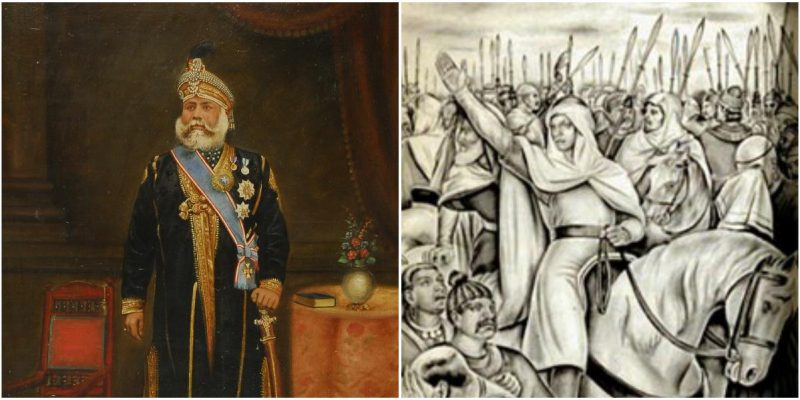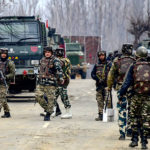The demand first came last year, when a statue honouring Maharaja Ranjit Singh was unfolded at the Lahore Fort. Despite its political motivations and other contexts, it was an extraordinary moment. An extremely rare moment when the Pakistani state was not just acknowledging but celebrating a non-Muslim ruler. This was after years of propaganda of projecting the Sikh era as being tumultuous for the Muslim population of Punjab. Facing the Lahore Fort, in the alley of Badshahi Masjid, at least till a few years ago, when I last saw them, there were pictures from the colonial era that showed the dilapidated condition of the mosque during the Sikh era, when it was used as a horse stable.
Though unveiling the statue was praiseworthy, it was just that: a symbolic moment without any accompanying structural changes. In school and college history books, the Sikh era continued to be projected as tyrannous for the Muslim population, while Muslim nationalist writers vehemently recalled Ranjit Singh’s ‘atrocities’. It, therefore should not come as a surprise that shortly after its installation, the statue was attacked and damaged. The message had larger reverberations than was acknowledged at that time: Ranjit Singh, or for that matter, no Hindu or Sikh ruler could be celebrated in Pakistan.

Statue of Maharaja Ranjit Singh. Photo: Twitter/pid_gov
Pakistan, like every other country in the world, has used history to tell its own national story. The story, of course, is not fixed. It requires constant revisions and modifications. For example, in the early years of the country, it was acceptable to teach the story of Ramayana or Mahabharata to school children. It was acceptable to discuss the Kushan or Gupta dynasties. As relations with India deteriorated, most of these stories began slipping away, while other stories became more prominent.
Also Read: Reclaiming the Nation: Reaching the Destination
These are the stories of Muhammad Bin Qasim, Mahmud Ghazni, Muhammad of Ghor, Babur, Nadir Shah and Ahmad Shah Abdali. It became the story of Muslim triumph over a pagan land, a chaotic rule replaced by a benevolent empire enlightened by religious exceptionalism. Just as the creation of Pakistan was projected as the triumph of Muslim nationalism in juxtaposition to the defeat of Indian nationalism (read Hindu nationalism), history was recast to tell this story of triumph over and over again.
The significance of bin Qasim
While all these historical characters are significant in this narrative, as can be testified by the names of our missiles, Muhammad bin Qasim acquired particular significance in this pantheon. He was the first Muslim ruler, the one who brought the ‘first light onto this dark land’, the harbinger of glorious things that were to come after him, the Ghaznis, the Baburs, the Abdalis, and of course Pakistan.
If we use the story of Ramayana, they became the Rams of the story. However, every Ram needs a Ravana, the penultimate villain, on the basis of whom his glory is projected. Thus entered the villainous Hindu rulers like Raja Dahir, Anandpala, Prithviraj Chouhan, Shivaji and others. For the true light of their rule to shine, the era preceding them needed to be darker. In order for these Muslim rulers to be just, the ones before them needed to be more atrocious.
Standing in contrast to the glorious Muhammad Bin Qasim, the 17-year-soldier, was the aging Raja Dahir, the ruler of Sindh. If Muhammad Bin Qasim had to be a symbol of Pakistani nationalism, then Raja Dahir had to be its anti-thesis. And that is what he came to represent for a long time, his name itself representing tyranny. It was on his body that the glorious statue of Muhammad bin Qasim was to be erected, holding the flag of Pakistani nationalism.

Muhammad bin Qasim. Photo: Wikimedia Commons/Mohammad Adil CC BY-SA 3.0
While the nationalist project, on one hand, had its successes, exemplified by the attack on Ranjit Singh’s statue. It is never completely successful, with constant challenges being thrown at this deterministic narrative. The most recent challenge to this national story comes from Sindhi sub-nationalists, who have over the years tried inverting these symbols, casting Raja Dahir as the real hero – the Ram of the story – and Muhammad bin Qasim, as the bloodthirsty invader, Ravana.
The debate in Sindh
When Ranjit Singh’s statue was erected in Lahore, they demanded a similar tribute to be made to the “son the soil” in Sindh. A few days ago, the debate raged on social media, with Sindhi sub-nationalists calling Dahir a Sindhi hero and in the process, disowning Muhammad bin Qasim. Consequently, the Pakistani nationalists came to the defence of Muhammad bin Qasim and criticised Dahir.
Both these narratives are quite problematic. A critical analysis of history debunks myths on both sides. The point here is not to talk about “true” history. Historians have done that quite convincingly and effectively. For example, Romila Thapar has done a fantastic job in deflating these myths around Mahmud Ghazni, while historian Manan Ahmed Asif has done a brilliant job doing that for Muhammad bin Qasim and Raja Dahir.
The question here is not about Raja Dahir or Muhammad bin Qasim, but rather what the debate tells us about how Pakistani nationalism defines itself, and how Sindhi sub-nationalism actively seeks to define itself in opposition to that. In many ways, the process is quite similar to what happened in pre-Partition India, when Hindu nationalism picked up these symbols of “local” resistance in opposition to “foreign” Muslim invaders, as its hero. This was followed by a reversing of these symbols by Muslim nationalism, as is shown by another impressive historian, Ali Usman Qasmi. These symbols were then inherited by India and Pakistan.
In the Sindhi context, the appropriation of these symbols represents a sense of marginalisation at the hands of the Pakistani State. This defiance to Pakistan’s national historical symbols needs to be seen in the context of a long relationship between the Sindh and the federal state, where a sense of marginalisation was experienced in several ways: with the arrival of muhajir and the “loss” of Karachi to the non-Sindhis, with the purchase of large tracts of lands by Punjabi landlords in Sindh, with the low representation of Sindhis in the bureaucracy, with the drying of Indus as it enters Sindh, with the assassinations of Sindhi prime ministers Z.A. Bhutto and Benazir Bhutto. Most recently, this was experienced during the tussle between the Sindh government, led by the Pakistan Peoples Party (PPP) and the federal government, led by the Pakistan Tehreek-e-Insaf (PTI), over strategies of how to handle the COVID-19 lockdown and the debate around the 18th Amendment, which assures autonomy to the provinces, hailed by Sindh, but has been increasingly criticised by the PTI.
Also Read: After Partition, Trust was the Biggest Loss in Sindh

Raja Dahir. Photo: Wikimedia Commons/INDIAN SCHOOL, Public Domain
Thus, while keyboard warriors engage in a debate on Muhammad bin Qasim and Raja Dahir, the real debate that needs to happen is about the relationship between the Sindh provincial government and the federal state. Unfortunately, when this debate is held through these symbols, the real issues are often forgotten and never addressed.
Haroon Khalid is the author of several books including Imagining Lahore and Walking with Nanak.




